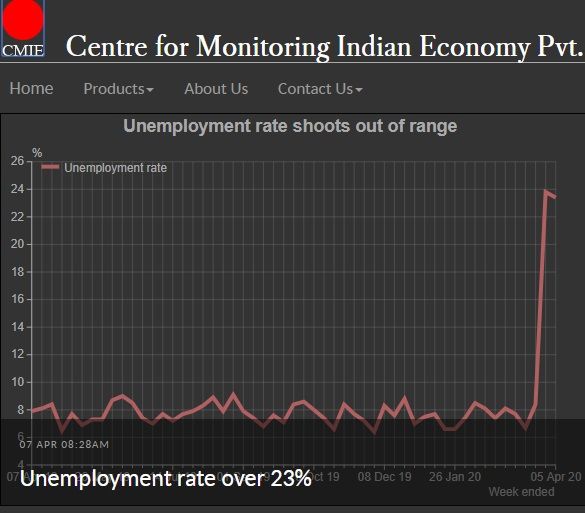More than 40 crore workers in India’s unorganized sector may be affected due to the lockdown: ILO
The lockdown may lead to a steep rise in India’s unemployment rate, the Centre for Monitoring Indian Economy and the International Labour Organisation have said in their reports


The corona lockdown may lead to a steep rise in India’s unemployment rate. The Centre for Monitoring Indian Economy (CMIE) and the International Labour Organisation (ILO) have issued warnings through their reports. According to the International Labour Organisation (ILO), more than 40 crore workers in India’s unorganized sector may be affected due to the corona lockdown, which will affect their employment and earnings.
According to the report: “India, along with Nigeria and Brazil, are among the countries that were relatively least prepared to deal with the situations arising from this epidemic. This will affect the workers working in the unorganized sector in these countries and they will be trapped in a deep vicious circle of unemployment and poverty.”
Significantly, while implementing the lockdown, Prime Minister Narendra Modi had issued an advisory to all employers to retain their employees and release full salaries to them in time. But, since the lockdown, there have been reports of wage cuts and retrenchment from all organized and unorganized sectors.

Guy Ryder, the ILO Director General, said in his statement: “Workers and businesses are facing catastrophe, in both developed and developing economies. We have to move fast, decisively, and together. The right, urgent, measures, could make the difference between survival and collapse. The governments have to take swift steps to end the crisis. The steps taken in the right direction will prove to be decisive at this time. This is the greatest test for international cooperation in more than 75 years. If one country fails, then we all fail. We must find solutions that help all segments of our global society, particularly those that are most vulnerable or least able to help themselves.”
The ILO report also mentions the reverse migration of migrant labourers in India, in which migrant labourers started returning to their villages after the lockdown was announced.
The Centre for Monitoring Indian Economy (CMIE), a close watch agency on the Indian economy, has also released a report stating that India’s unemployment rate in March 2020 was 8.7%, the highest in the past 43 months. According to the CMIE’s real time meter, currently, India’s unemployment rate has crossed 23%.
In its report, the managing director of the institution, Mahesh Vyas, said: “These unemployment figures are intimidating and alarming. Employment opportunities in the country are continuously decreasing. That’s why the labour participation rate or the active workforce (LPA) in March, 2020 also declined to 41.9 per cent, up from 42.96 per cent in January.”
He pointed out that in March, 2020, about 90 lakh people were out of active workforce or labour participation. The figure of active labour force declined from 44.3 crore in January 2020 to 43.9 crore in March. This clearly means that the employment of about 90 lakh people was affected in the month of March.

He considers the lockdown as the primary reason for bringing the economy to a standstill except for some major sectors. He believes that the figure will grow further in the next coming months due to corona and lockdown.
The Investment and Credit Rating Agency (ICRA) estimates that India’s growth rate will go down to 4.5% during the January-March 2020 quarter and for this reason India’s GDP rate can only be 2% in the 2020-21 session.
According to Shamser Dewan, vice-president, ICRA: “The COVID-19 pandemic may lead to a decline in demand, a reduction in people’s purchasing power, layoffs and reductions in salaries. Further, due to full or partial lockdown situation in other countries, exports of goods like oil and gas will also decline, affecting the economy and declining GDP.”

The ILO in its press release of April 7, 2020 has mentioned that the spread of the corona pandemic globally has impacted working hours and earnings. Four out of five people (about 81 per cent) have been affected due to partial or complete lockdown around the world.
According to the press release, “The COVID-19 crisis is expected to wipe out 6.7 per cent of working hours globally in the second quarter of 2020 – equivalent to 195 million full-time workers.”

